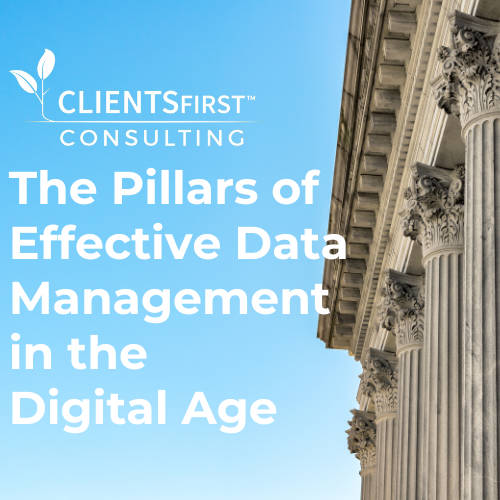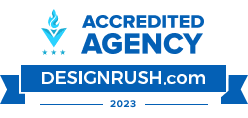The Pillars of Effective Data Management for Nonprofits in the Digital Age

In an era dominated by technology and digital transformation, tools and platforms promise streamlined operations and improved efficiency. However, their potential is inherently tied to the quality of data they house. Ensuring impeccable data quality isn’t just about maintaining a functional system; it’s about harnessing the full potential of digital platforms to optimize business strategies and communications.
Challenges Arising from Inadequate Data Management
- Communication Breakdown: Flawed data quality hinders effective communication with your donors and target audience, diminishing the impact of marketing campaigns.
- Event Limitations: Misdirected invitations due to incorrect data means wasted opportunities to connect with prospects and potential donors.
- Diminishing Tech Adoption: Duplicated and outdated data discourage users, leading to underutilized tech investments.
- Operational Hiccups: Consistent, accurate data is paramount for internal coordination. Discrepancies can tarnish an organization’s reputation.
- Subpar Client Services: Accurate data provides insights into donors’ needs, allowing nonprofits to tailor their communications.
- Losing Competitive Edge: Inattention to data quality can set you behind competitors who prioritize it.
- Missed Business Opportunities: Constantly updating and connecting with a database of donors and prospects is pivotal to uncovering new business avenues.
- Skyrocketing Compliance Costs: Stringent data privacy laws like CASL, GDPR and CCPA mandate organizations to maintain up-to-date data. Non-compliance can lead to hefty fines.
The Importance of Comprehensive Data
A robust data set isn’t just about quantity; it’s about quality and breadth. For nonprofits, this entails accurate information such as the company’s name, address, phone number and website. For individual contacts, essentials include their full name, affiliated organization, job title and email. In today’s privacy-conscious world, added details like phone numbers and physical addresses have once again become critical, ensuring compliance with global privacy norms.
Furthermore, the granularity of data can be a game-changer. Classifying companies based on industry, size, revenue, and employee count, or categorizing contacts as clients, prospects or competitors, enables targeted and relevant outreach. Such segmentation lets organizations cater to the specific interests, roles and requirements of their audience.
The age-old adage, “Garbage in, garbage out,” remains true in the digital era. Prioritizing data quality is not merely about operational efficiency but about maximizing the potential of your tech investments, ensuring relevance in communication and staying compliant in a dynamic regulatory environment. Businesses must recognize that their most valuable asset is not just data, but high-quality, comprehensive and actionable data.
For additional information on some of the most helpful ways to categorize contacts, download our Categorizing Contacts for CRM Success Worksheet, which was created from our experience working together with hundreds of top nonprofits and other organizations.
For almost 20 years, the team at CLIENTSFirst Consulting has been helping nonprofits, professional services firms and other organizations successfully select, implement, and integrate CRM, eMarketing, Donor Databases and other marketing technology systems to maximize value, adoption and return on investment. If you need help with CRM Success, please contact us at 404-249-9914 or Info@ClientsFirstConsulting.com.


